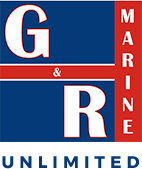Boat Maintenance Made Simple: The Essential Checklist & Tips
Boating is the fun part—maintenance is what keeps the fun going. Your boat is a major investment, and a steady, simple upkeep routine is the best way to protect it. Regular maintenance keeps you safe, reduces breakdowns, and preserves resale value. The better news: most tasks are straightforward once you know what to do.
Use this guide as your working checklist. It covers hull care, engines, electrical, fuel, plumbing, safety gear, and more—plus when to DIY and when to call a pro.
Boat Maintenance Checklist
1) Hull & Bottom
The hull lives in water 24/7, so slime, salt, and growth add drag and stress.
Rinse and scrub the bottom regularly; even a thin film hurts performance and fuel economy.
Inspect for blisters, cracks, chalking, or soft spots; repair early to prevent water intrusion.
Reapply anti-fouling paint every 1–3 years based on usage and waters.
Check through-hulls and seacocks for corrosion, stiffness, or leaks.
Inspect rudder/strut/shaft/prop or jet intake; remove line, fix dings, and treat corrosion.
2) Engine
Your engine is the heartbeat—routine care prevents surprises.
Change oil and filters every 100 hours or once per season (use marine-rated oil).
Flush the cooling system; inspect impeller/thermostat; maintain antifreeze levels (closed-loop).
Replace fuel filters; inspect fuel hoses for cracks, softness, or leaks (ethanol-rated if needed).
Check belts and coolant/fuel hoses; replace anything cracked or loose.
Test batteries; clean/tighten terminals; verify alternator and starter operation.
3) Propulsion & Running Gear
Smooth drive = smooth ride.
Inspect prop(s) for dings, bends, cracks, or wrapped fishing line.
Check shaft alignment and cutlass bearings; lubricate where applicable.
Service sterndrive/outdrive per manual; look for leaks, torn bellows, or bad seals.
Clear water strainers so cooling water flows freely.
4) Batteries & Electrical
Reliable power keeps lights, pumps, and electronics online.
Monitor state of charge/voltage; clean and protect terminals with dielectric grease.
Inspect wiring for chafe, corrosion, and loose connections; use tinned marine wire for fixes.
Test nav/anchor lights, bilge blowers, pumps, horn, GPS, and breakers before each outing.
Consider LED lighting and solar trickle-charging to ease loads.
5) Fuel System
Clean fuel prevents poor performance and hard starts.
Replace fuel filters/water separators on schedule; drain water as needed.
Inspect tanks, lines, and clamps; replace anything brittle or leaking.
Keep vents clear; add stabilizer for layups or infrequent use.
Periodically check inside tanks for sludge/rust; clean if necessary.
6) Plumbing, Bilge & Seacocks
Leaks and stuck valves cause headaches—keep them moving.
Exercise and lubricate seacocks; confirm handles move freely and shut fully.
Test bilge pumps, float switches, and alarms; clean the bilge.
Sanitize freshwater tanks annually; inspect hoses and fittings for weeping.
Inspect heads, macerators, and waste lines; use marine-safe cleaners and deodorants.
7) Safety Gear
When you need it, you need it now.
Inspect PFDs for tears and proper sizing; keep them accessible.
Check fire extinguishers for charge/date and mount them within reach; show crew how to use them.
Verify flares, horn, EPIRB/PLB, and first-aid kit; store spares dry.
Run quick drills: man-overboard, fire response, and abandon-ship roles.
8) Deck Hardware & Lines
Hardware sees constant loads and weather.
Clean and lube winches/blocks/pulleys (where applicable).
Inspect lines, fenders, and dock lines; replace frayed or sun-baked rope.
Tighten loose fasteners; re-bed/seal if you see rust trails or leaks.
Check anchor, chain, shackles, and windlass; verify smooth, quick deployment.
Wash and inspect canvas, Bimini, and covers; patch small tears early.
9) Interior & Storage
Dry boats last longer and smell better.
Ventilate cabins/lockers; use desiccants or dehumidifiers to curb mold.
Wipe salt/dust; use marine-safe cleaners on surfaces.
Inspect cushions, flooring, and headliners; clean or repair before damage spreads.
Stow gear securely; watch for pests in long-term storage.
Check galley outlets/appliances and freshwater fittings for leaks.
DIY vs. Pro Service
DIY makes sense for: rinsing/washing, basic inspections, battery care, fluid checks, simple filter swaps, tightening hardware.
Call a pro for: engine/drive diagnostics, electrical troubleshooting, structural or fiberglass repairs, seasonal commissioning/winterization if you’re unsure.
DIY Pros
Saves labor costs
Teaches you your boat
Work on your schedule
Satisfying to fix small issues
DIY Cons
Easy to miss something
May lack tools/diagnostics
Takes time to learn
Limited documentation for warranties/insurance
Pro Service Pros
Experienced techs and proper tools
Protects warranties and service records
Finds problems you might overlook
Faster turnarounds on complex jobs
Pro Service Cons
Higher cost
Appointment lead times
Less control over timing/details (unless specified)
In Connecticut? Request a Service Appointment at G&R Marine—we’ll handle inspections, seasonal service, repairs, upgrades, and storage so your boat is ready when you are.
Conclusion
A simple, steady routine beats occasional “catch-up” repairs. Rinse after every trip, do monthly checks, and schedule comprehensive seasonal service. Stick to the checklist above and you’ll prevent most issues, avoid big repair bills, and keep your boat running smoothly for years.
FAQs
Can I do boat maintenance myself?
Yes. Washing, checking fluids, swapping filters, testing batteries/pumps, and inspecting safety gear are all DIY-friendly. Leave complex engine, electrical, and structural work to a pro.
What are the core maintenance duties?
Regular exterior/interior cleaning, oil/filter changes, battery and pump checks, line/hardware inspections, and recurring safety-gear reviews.
What’s considered routine maintenance?
After each outing: rinse and quick visual check. Monthly: inspect engine, fluids, battery, belts/hoses, and prop/jet intake. Each season or every ~100 hours: oil/filter changes, fuel/water separator service, spark plugs (as needed), and full safety inspection.
How often should a boat engine be serviced?
Generally every 100 hours or once per season—follow your owner’s manual for model-specific intervals.
How much should I budget?
A common rule of thumb is ~10% of boat value annually, depending on size/use. Doing basic tasks yourself can trim that substantially.




